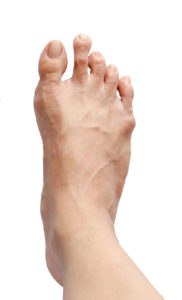 You’ve probably heard of the condition known as a bunion, but is also has a sister condition called a bunionette. So what is a bunionette, and how is it treated? We answer those questions and more into today’s blog.
You’ve probably heard of the condition known as a bunion, but is also has a sister condition called a bunionette. So what is a bunionette, and how is it treated? We answer those questions and more into today’s blog.
Understanding Bunionettes
A bunionette is a small bony deformity on the base of your little toe. Bunions develop on the joint of your big toe, and a bunionette forms at the toe joint on the opposite side of your foot. Bunionettes can be pretty painful, especially if you are wearing ill-fitting shoes. Coincidentally, those tight shoes are one of the most common causes of bunionette formation. Acute trauma and certain foot characteristics that place abnormal stress on the toe joints also contribute to bunionette development.
Symptoms of bunionettes include:
- Pain
- Redness
- Swelling
- Visible bump on the joint of the little toe
Diagnosis and Treatment of Bunionettes
Diagnosing a bunionette begins with a physical exam from a foot specialist. Your foot doctor will look for the formation of a bony prominence on the joint of the small toe, as well as for other indicators like swelling or tenderness. Bunionettes don’t typically affect range of motion in the toe, so manipulation techniques aren’t the best indicator of bunionette formation. Instead, doctors often confirm the diagnosis with an X-ray, which can show an angular deformity of the fifth metatarsophalangeal joint.
Most minor and mild bunionettes respond well to conservative treatment techniques. Common non-operative treatment methods include:
Switching Shoes – Changing to more comfortable shoes with a wider toe box can help accommodate the bunionette and help to resolve symptoms.
Bunionette Pads – Small pads can be applied over the bunionette to help protect the area and create some space when used in combination with a shoe.
Toe Spacers – Toe spacers can be placed between the fourth and fifth toes to help reduce the deformity and improve symptoms.
Activity Modifications – Cutting back on certain activities that stress the foot (like running) can help give the bunionette time to resolve.
Most individuals experience great results with conservative care techniques. However, if non-operative methods fail to correct the problem, surgery may be necessary. There are two main minimally invasive operations that can correct bunionettes. One operation focuses on removing the bony prominence, while the other operation focuses on repositioning the fifth metatarsal bone to correct the deformity. Which surgery you will undergo will depend on your specific situation.